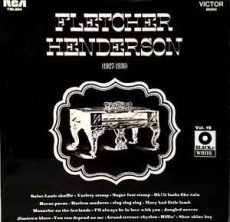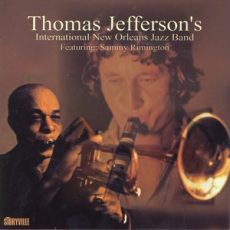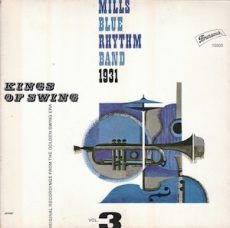
Daily Dose Of Jazz…
Peter Edwin Bocage was born on July 31, 1887 in New Orleans, Louisiana. At 21, he played violin as the leader of a ragtime band, the Superior Orchestra, which included Bunk Johnson.
He played trumpet in the Tuxedo Orchestra, the Onward Brass Band, and as the leader of the Excelsior Brass Band. He played with King Oliver’s band, the Fate Marable Orchestra, and A. J. Piron.
Heading to New York City he performed with Sidney Bechet and at the Cotton Club. He made records with Piron’s New Orleans Orchestra in 1923, and later with his band the Creole Serenaders.
As an educator he taught Louis Armstrong how to read music notes. Both jazz musicians met during jam sessions and created a friendship through music. In later years he performed at Preservation Hall in New Orleans.
Trumpeter and violinist Peter Bocage died in his hometown on December 3, 1967.
More Posts: bandleader,history,instrumental,jazz,music,trumpet,violin

Daily Dose Of Jazz…
Albert Wynn was born on July 29, 1907 in New Orleans, Louisiana but grew up in Chicago, Illinois where he began his professional career as a trombonist. His first appearance on record in 1926 backing Ma Rainey and the following year he played and recorded in St. Louis, Missouri with Charlie Creath.
Wynn went on to work with Earl Hines’s band briefly in 1928 before assembling a group of his own. Later that same year he joined the Sam Wooding Orchestra on their European tour and didn’t return to the United States until 1932 when he would live in New York City for a short time before going back to Chicago.
He was a member of Sidney Bechet’s New Orleans Feetwarmers for a stint going on to work with the bands of Jesse Stone, Carroll Dickerson, Richard M. Jones, and the Earl Hines Orchestra once again. During the late 1930’s and early ’40’s Albert played in the big band of Fletcher Henderson and the short lived assembly of Jimmie Noone.
Settling into semi-retirement he ran a Chicago record store and enjoined his final professional band work as a member of Franz Jackson’s Original Jazz All-Stars from 1956 to 1960 and the Gold Coast Jazz Band from 1960 to 1964.
Trombonist Albert Wynn died on May 1, 1973.
More Posts: bandleader,history,instrumental,jazz,music,trombone

Daily Dose Of Jazz…
Clarence Holiday was born Clarence Halliday on July 23, 1898 in Baltimore, Maryland and attended a boys’ school with the banjo player Elmer Snowden. Both of them played banjo with various local jazz bands, including the Eubie Blake band. At the age of 16, he became the unmarried father of Billie Holiday, who was born to 19-year-old Sarah Fagan, but rarely visited them. He moved to Philadelphia, Pennsylvania when he was 21 years old.
Holiday played rhythm guitar and banjo as a member of the Fletcher Henderson Orchestra from 1928 to 1933. He went on to record the following year with Benny Carter, then Bob Howard in 1935 and worked with Charlie Turner, Louis Metcalf, and the Don Redman Big Band between 193 and 1937.
Exposed to mustard gas while serving in World War I, he later fell ill with a lung disorder while on tour in Texas. Refused treatment at a local hospital when he finally managed to see a doctor, Clarence was only allowed in the Jim Crow ward of the Veterans Hospital. By then pneumonia had set in and without antibiotics, the illness was fatal.
Guitarist and banjoist Clarence Holiday died in Dallas, Texas on March 1, 1937.

Daily Dose Of Jazz…
Thomas Jefferson was born on June 20, 1920 in Chicago, Illinois. He played drums and French horn while young before switching to trumpet and was strongly influenced by Louis Armstrong. His professional career began when he was 14 playing with Billie and De De Pierce.
He played with Papa Celestin’s orchestra in 1936, as well as with New Orleans jazz musicians Sidney Desvigne and Armand “Jump” Jackson. The 1950s saw him working with Johnny St. Cyr, Santo Pecora, and George Lewis. In 1966, Andrew Morgan recruited Jefferson to play lead trumpet for the Young Tuxedo Brass Band. Subsequently, Jefferson led a jazz band which performed at the New Orleans jazz club Maison Bourbon.
Thomas recorded sparingly as a leader; sessions include dates for Southland Records in the 1960s and Maison Bourbon Records in the 1970s. Jefferson had a cameo as a jazz musician in the 1975 film Hard Times.
Trumpeter Thomas Jefferson, who recorded six albums as a leader and played Dixieland, died in New Orleans, Louisiana on December 13, 1986.
More Posts: bandleader,history,instrumental,jazz,music,trumpet

Daily Dose Of Jazz…
Theodore McCord was born May 17, 1907 in Birmingham, Alabama and was the twin brother of Castor McCord, also a reedist. While both brothers played tenor saxophone and clarinet, in addition Ted played alto saxophone.
As a student at Wilberforce University in the 1920s, he played in a student group led by Horace Henderson. He also played in Edgar Hayes’s group, the Blue Grass Buddies, and the McKinney’s Cotton Pickers and the Mills Blue Rhythm Band.
He can be heard playing on their sessions with Louis Armstrong. Other credits include recordings with King Carter and the singer Ollie Shepard.
Roping out of music in the Forties, saxophonist Ted McCord, who was principally active in the 1920s and 1930s, his date and place of his death is unknown.
More Posts: clarinet,history,instrumental,jazz,music,saxophone



